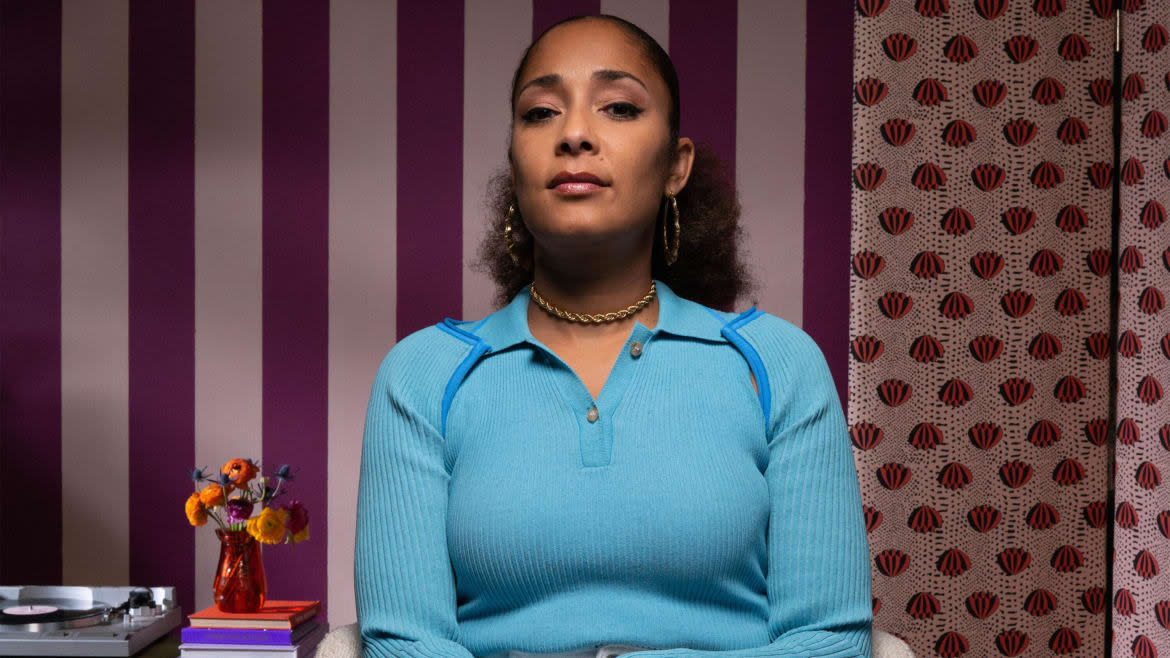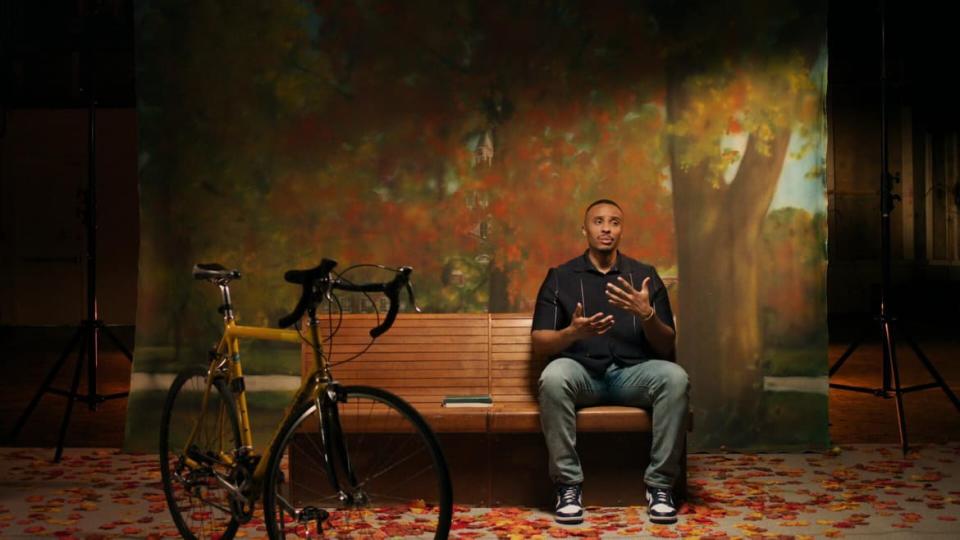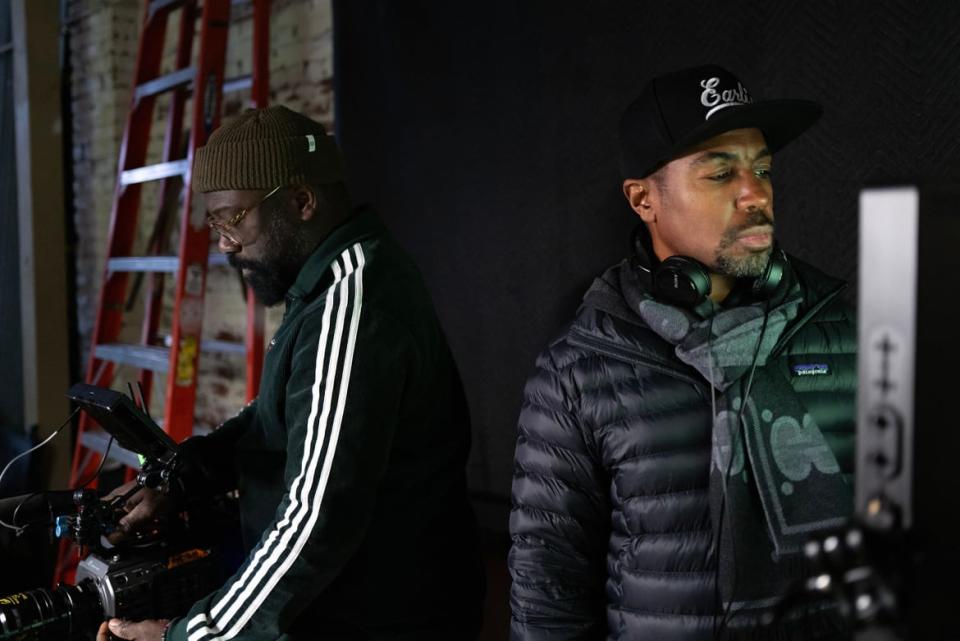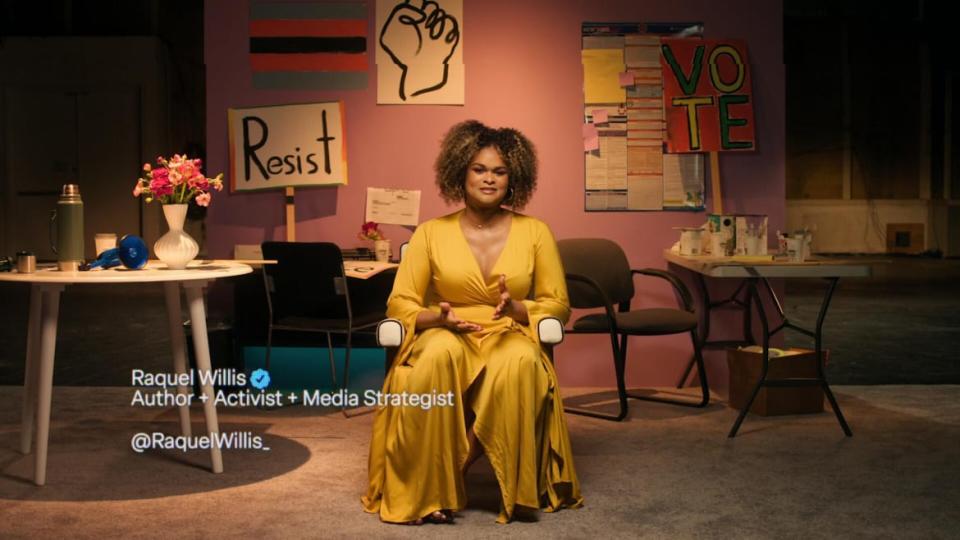‘Black Twitter’ Tells the Biggest Story in Social Media

- Oops!Something went wrong.Please try again later.
- Oops!Something went wrong.Please try again later.
When Wired’s Jason Parham published “A People’s History of Black Twitter” in July 2021, it felt monumental. Here was an attempt to comprehensively recount one of the largest, most impactful online communities in history—a daunting task way beyond what most internet culture explainers ever approach. Its scope was so impressive that the feature was split into two parts.
“This story of Black Twitter is as important as the story of Facebook, as the story of all these other tech platforms,” Parham told The Daily Beast’s Obsessed in an interview at SXSW earlier this year, of the inspiration behind his feature. “Our story is valuable.”
But there was only so much that Parham could include. After all, Black Twitter is something that defies simple definition: It’s “a comedy showcase, therapy session, and family cookout all in one,” as Parham wrote in his piece. Black Twitter is the simplest way to refer to the space carved out by Black social media users, who have used the tools of the internet—memes, hashtags, trending topics—to develop a language, sense of community, and social influence.
Tackling all of that was impossible. That’s where Hulu’s adaptation of the project, Black Twitter: A People’s History, comes in. It picks up where Parham left off, filling in the dramatic evolutions that Twitter itself has undergone in the years since he reported his feature. Helmed by director Prentice Penny (Insecure) and showrunner Joie Jacoby, the three-episode docuseries gathers a vast array of Black public figures—from journalists to comedians—to gush about their favorite corner of the internet, while also voicing their fears about its future on the most unpredictable social media platform.
While the show, just like the Wired article, makes sure to acknowledge how much fun this part of the internet is, it also emphasizes its cultural necessity. A dizzying number of familiar clips and GIFs fly across the screen; at the same time, talking heads underline how important having a space like Black Twitter was during rattling moments like the death of George Floyd and the Jan. 6 Capitol Riots.

Jason Parham.
The overarching purpose of the show mirrors that of the article, said Penny, ahead of the show’s premiere at SXSW. “If we didn't document it, the story about Twitter would just be another oral story.”
Below, Parham, Penny, and Jacoby discuss how they brought such an impressive feature story to the small screen, stopped the show from devolving into the equivalent of doomscrolling, and what the future of Black Twitter looks like, now that the platform isn’t even called Twitter.
Jason published “A People’s History of Black Twitter” in 2021. How did this adaptation come together?
Prentice Penny: I was looking to do something to [take a break from] a narrative show in between Insecure. I didn’t really want the next thing I did to be compared to that. … I had done scripted television for a long time, and I wanted to find something that would challenge me and push me in a different way—that would kind of scare me again.
I'm a huge Black Twitter fan and participant, so when [the producers] sent me the article, I just read it and fell in love with it. I fell in love with why Jason was doing it, and I understood why it was necessary… If I was going to get into something that felt unscripted, it felt like a playground that I could have had a foot in and understood, as opposed to something that I don't really know about or some kind of obscure thing. It felt something very close to home.
Joie Jacoby: Immediately in our first conversation, Prentice had a really clear vision of how he wanted this to look and feel. As a showrunner, that’s really exciting and great, to be able to have something to go off of and collaborate with.
The Newest ‘Real Housewives of New Jersey’ Dish: We Don’t Have ‘Evil Energy’
That sense of style is clear from the beginning—we see interviewees on sets that look like stoops and hair salons. They’re in community spaces while talking about a virtual community space.
Penny: Yeah, that was super-intentional. … It was just like, “OK, well, where do we engage on Black Twitter?” We engage on Black Twitter in barbershops, hair salons, parks, our living rooms, our bathrooms, the subway, school gyms, whatever.
How do we even acknowledge this, right? So between [those stylized sets] and using GIFs and memes to punctuate comedy, we really wanted it to feel like having multiple things coming up at the same time, scrolling, getting out of stuff. We wanted the doc to visually feel the way Black Twitter feels, the way you engage on it.
Jacoby: It brings joy and levity to serious moments [in the doc]—just the same way as when you're on Twitter and engaging with something serious, but then something pops up a meme or whatever that takes you out of it, which is needed. It was very cool to be able to figure out how to do that on screen.

Prentice Penny.
That levity was appealing, because there’s a lot of negativity in discussions about social media. The tech industry is volatile—it’s why the show begins with the question, “What do we do if Twitter goes away?” Twitter isn’t even called Twitter anymore! In your work, Jason, how do you balance the feelings of both fun and doom that social media comes with?
Jason Parham: You just run right through it. I think that [dynamic] has been so inherent in [Black culture] always, and especially in digital spaces. [On Twitter], even during something like the Black Lives Matter movement—a very serious thing that sort of shaped the platform into what it is—that was still a time of fun and laughter. People were still looking for joy during those periods of time.
I remember when I did my original reporting, I was talking to [Pulitzer-winning journalist] Wesley Lowery, and he was saying that one of the most popular memes that we've seen today is from a Darren Wilson rally. “Black guy on the phone”—that’s from a Darren Wilson rally. That sort of painful moment is juxtaposed with this meme that people use all the time. … You just have to talk about all these things happening at the same time.
How That Epic (and Sexy) ‘Challengers’ Final Tennis Match Was Made
Both of those conversations do come through. How did you condense all of that reporting into three hour-long episodes?
Parham: I would push back against that. I would say we expanded it. I didn't even get everything. There’s only so much space we can get into a magazine, especially when it’s going into print. I think what the doc does is expand on certain topics that I wasn’t even able to engage fully with. We get to get an inside look at Black employees at Twitter, and the whole revolution that was going on there, that I didn’t really get to touch on in my piece. We get to talk about the queer issues and gender parity and gender imbalances with men and women on the platform, and go a little deeper into the toxicity of it all.

Raquel Willis.
Penny: Black Twitter is not a person or an event. It’s this amorphous thing that exists, so it was like, how do you give that sort of a structure? … I was just really copying what [Jason] was laying out: Here’s the fun times, and here’s the parts where it gets a little bit more problematic.
[The article] kind of gave it a really great coming-of-age [story]—like coming into your adolescence, and then stepping into your grown-adult phase of what Black Twitter should really mean, and it being a grown-ass woman now. That made sense to me, so anything that didn’t fit on the coming-of-age story, [we had to cut].
Parham: TV’s just such a different medium, so there’s so much more to expand on. It's essentially telling three parallel stories that I don’t think I was able quite to pull off in my piece. It’s the story of the rise and influence of Black Twitter. It’s also the story of Twitter itself, the company, and then the story of American Black folks within that, and how those things sort of weave together. And I think the series does it a lot better than I was able to pull off—I was on deadline.
Penny: You did great. I’m not gonna let you throw your writing.
Parham: No, I know I did great. [laughs]
‘We Were the Lucky Ones’: Thomas Kail on the Emotional Finale Episode
Adapting a piece of written work into a visual medium does seem like a very different task. Another thing Jason couldn’t touch on in his article is what Twitter is today: It’s called X, for one. How do you think Black Twitter will evolve from here?
Parham: I think the evolution is the docuseries. This is the full-circle moment. The people are always bigger than the platform, but now I think this is proof that this is our story, and we were taking ownership of it. This is our place in history.
Jacoby: I think what the article was really great at was [saying] that this deserves to be documented. This deserves to be here forever. And if whoever buys it decides to turn it off or delete it or whatever, it will exist because of that.
It feels weird when you’re talking about TV like this, but I think this is really important. I actually think that we need this, because somebody is trying to turn us off. [Twitter] could disappear, and these stories would not be known forever, and they need to be, for the celebration of just blackness.
Penny: We don’t have many spaces where our history is there to be seen front and center, and this was a way to be able to do that. [Black Twitter] is certainly where culture moved, conversation moved, movements got started—and that could all go away, and we would not have any record of it.
Get the Daily Beast's biggest scoops and scandals delivered right to your inbox. Sign up now.
Stay informed and gain unlimited access to the Daily Beast's unmatched reporting. Subscribe now.

